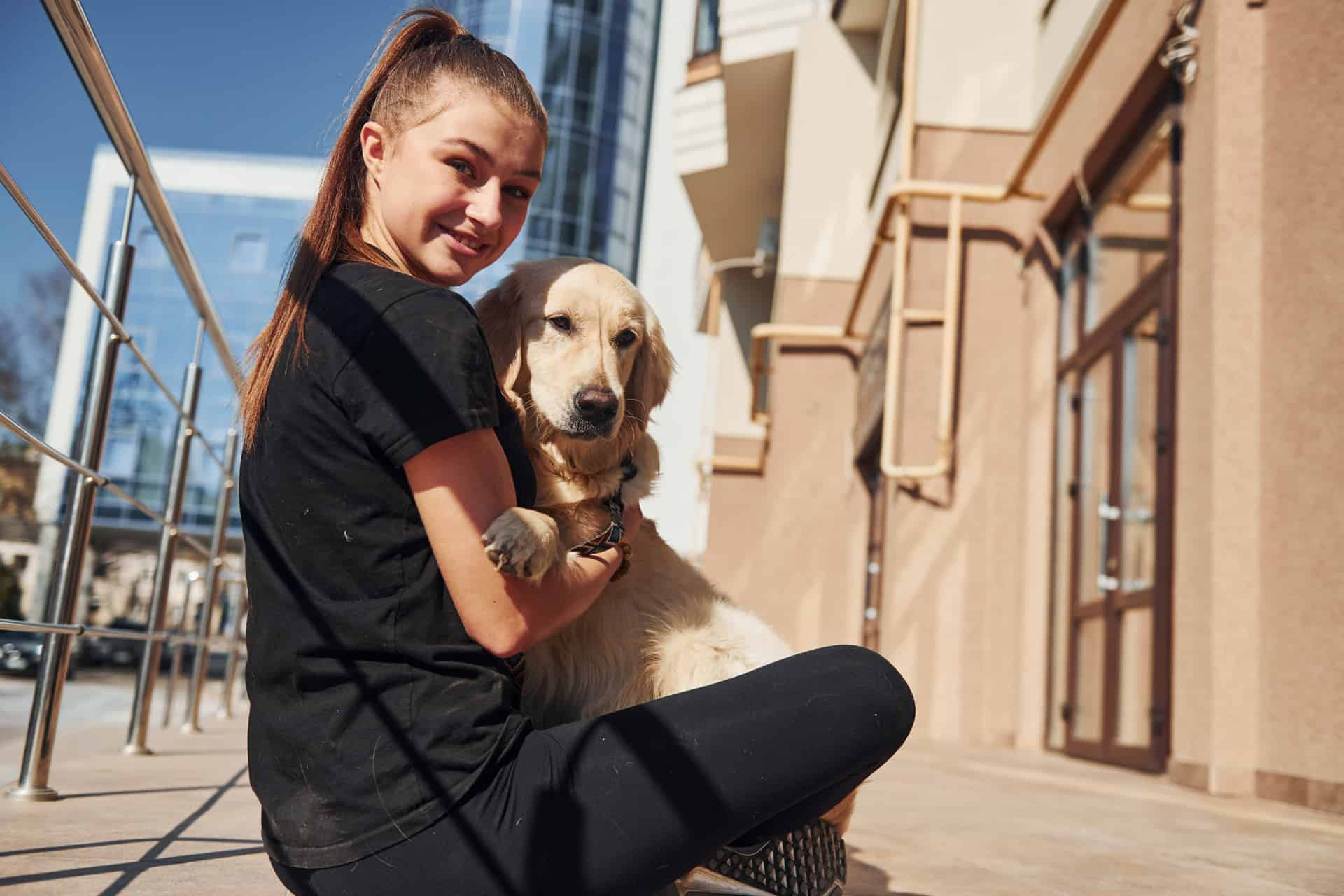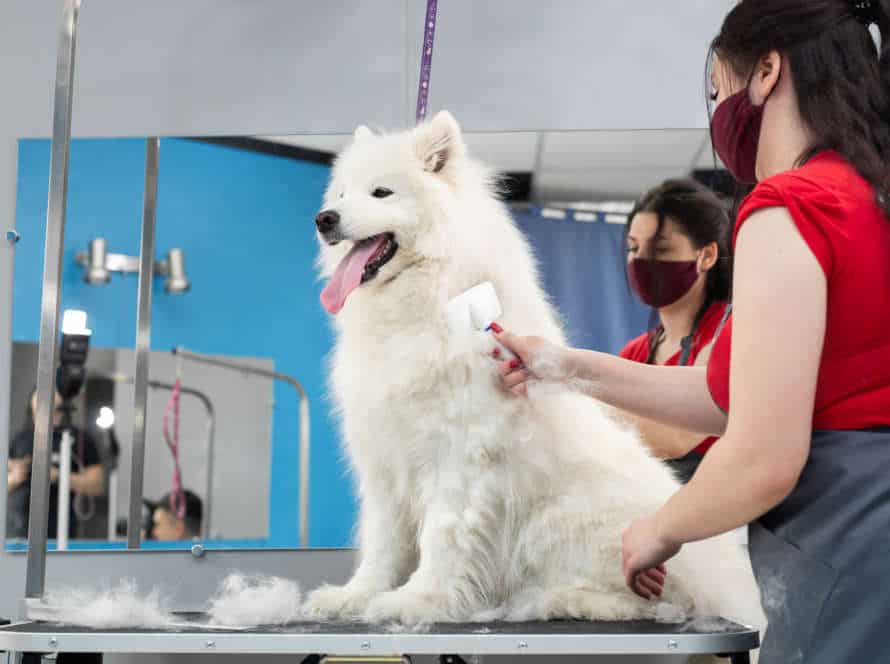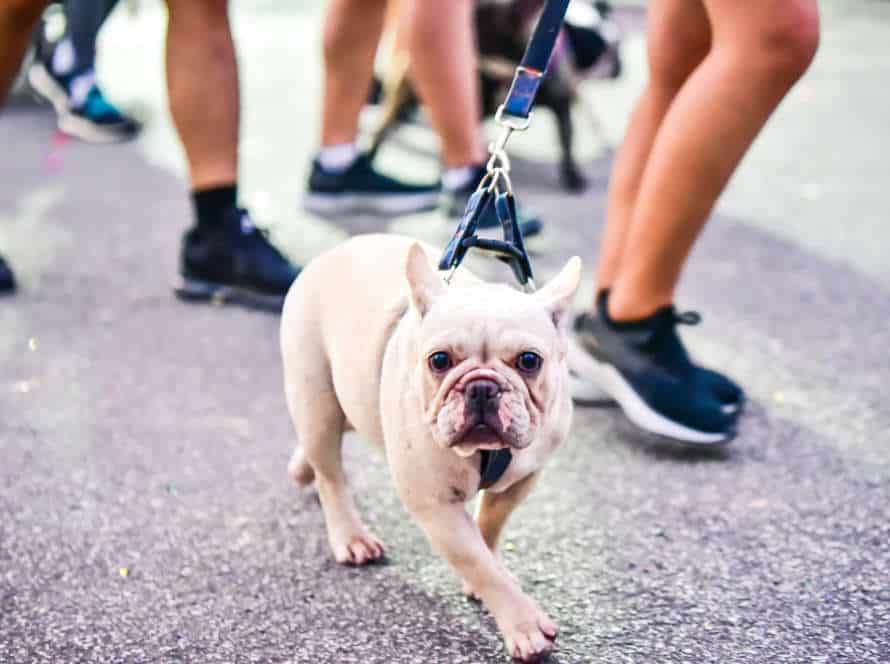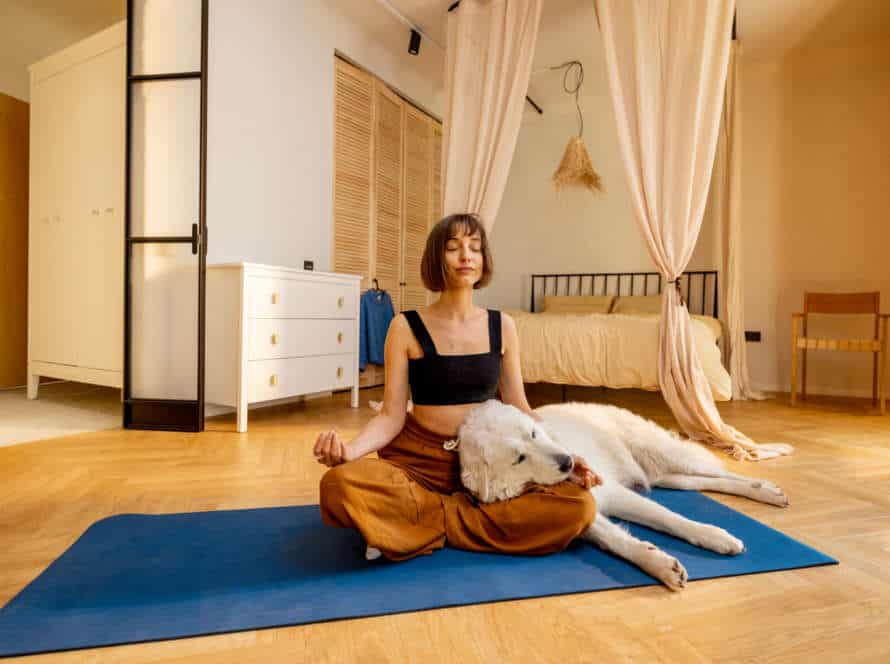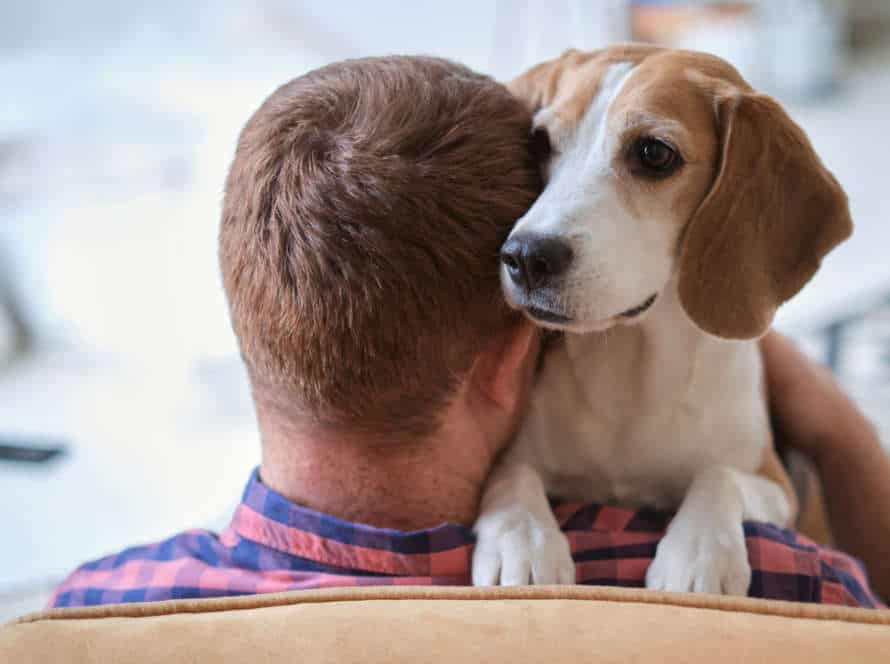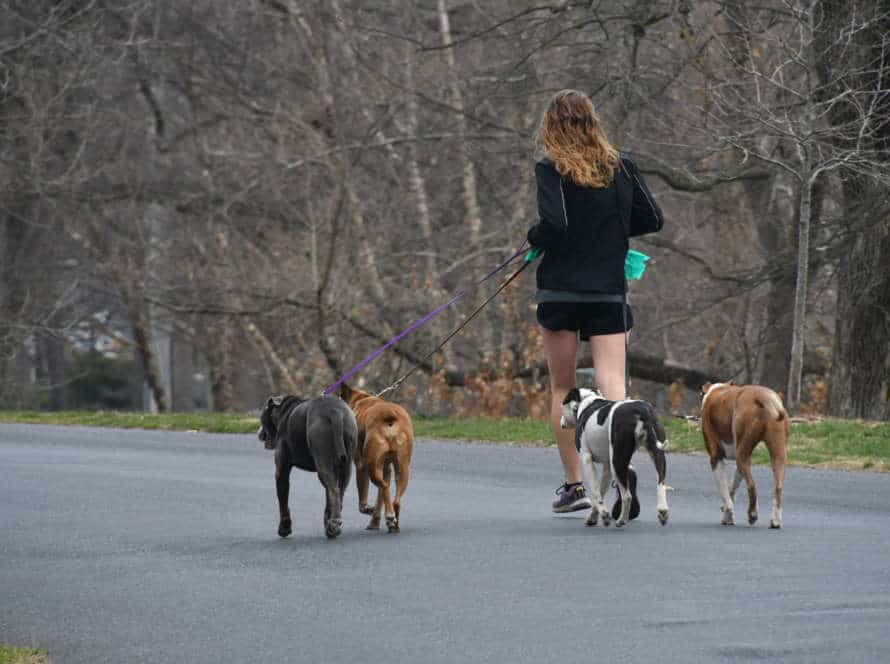Tried and True Exercises to Build Trust with Your Dog
For strong connections between you and your pup, gaining their trust is key. Here are some tried-and-true exercises for building trust:
- Eye contact: Lock eyes with your pup for a few seconds and reward them with a treat or toy. This helps them trust you and feel safe.
- Move slow: Avoid any jerky movements around your dog, so they don’t get startled.
- Positive reinforcement: Use treats, praise, or playtime to reward good behavior. This will help build trust.
- Training exercises: Practice obedience with them like ‘sit’, ‘stay’, ‘come’, ‘down’. This creates a routine and builds trust.
- Grooming: Regularly groom them to show care for their wellbeing.
It takes time and patience to build trust. By doing these exercises, you can have a loving bond with your canine friend!
Tip: Always approach them from the side instead of head-on to show trust.
Establishing a Bond with your Dog
Creating a bond with your pup is key for a good relationship and to build trust. A strong connection between you and your pup makes for a great atmosphere of respect and understanding. To do this, there are lots of proven exercises. Let’s discover them!
Understanding your Dog’s Body Language
It’s essential to grasp your pup’s body language for creating a strong connection and trusting relationship. Let’s look at some tips:
- Eyes: Soft, direct eye contact implies friendship. But a hard stare shows aggression or fear.
- Ears: Pointed, forward ears show alertness. Ears lying flat against the head mean fear or submission.
- Tail: A wagging tail with loose movements signals happiness and joy. A stiff and upright tail is a sign of caution, fear, or aggression.
- Mouth: Open, relaxed jaws often mean a relaxed and pleasant mood. But a closed mouth with exposed teeth implies aggression or fear.
- Overall body posture: Loose body means comfort and ease. A tense or crouched body means fear or submission.
By understanding your dog’s body language, you can communicate better and deepen your bond.
Use Positive Reinforcement Techniques
Establish a strong bond with your pup by using positive reinforcement techniques. Here are some that work well:
- Treat Training – Give small, yummy treats when pup does as you ask. Start with basics like ‘sit’ and ‘stay’, and slowly make it harder.
- Clicker Training – A type of operant conditioning, a clicker marks and encourages desired behaviors. Helps pup know what you want, and keeps them focused.
- Playtime – Games like fetch, tug-of-war, or hide-and-seek strengthen your bond and build trust. Plus, exercise and mental stimulation!
- Verbal Affirmations – Use positive words like ‘good job‘ or ‘well done‘ to boost pup’s confidence.
Always use positive reinforcement. Harsh punishment or negative reinforcement can harm the trust between you and your pup.
Spend Quality Time with Your Dog
Quality time with your pup is key for a strong bond. Here are some useful activities to help deepen your relationship:
- Take your pup for a walk and explore together – keep them on the leash, let them explore.
- Play together – games like fetch or tug-of-war can help build trust and relieve stress.
- Teach new tricks – ‘sit’, ‘stay’, or ‘come’ will help communication and trust.
- Grooming – regular grooming helps build trust and keeps them healthy.
- Read their body language – understanding their moods and needs will help communication and trust.
Remember – spending quality time with your pup is not only important for their health, but yours too! Consistency is key to a strong bond.
Exercising with your Dog
Exercise is a great way to bond with your dog! Not only does it help keep your pet fit and healthy, but it also builds trust. There are many forms of exercising you can do with your pup. Here’s how to create a stronger connection between the two of you:
Try out some tried and true exercises!
Walking on a Loose Leash
Take your pup for a walk with a loose lead to strengthen the bond between you two and make the experience more enjoyable. Here’s how to do it:
- Train your pup the basics such as ‘sit‘, ‘stay‘ and ‘come‘.
- Switch to a front-clip harness rather than a collar to stop tugging.
- Start in a quiet area without any distractions and increase the difficulty over time.
- Reward them with treats and compliments for good behaviour and ignore the bad.
- The lead should be long enough for control but not too tight to restrict movements.
- Be patient and consistent with the training. Gradually make the walks longer and more complex. Pro Tip – Exercise is key to their physical and mental health, so fit in daily walks!
Playing Fetch, Chase and Tug of War
Playing fetch, chase & tug-of-war are great exercises to build trust with your pup. Plus, they burn off energy and help keep them fit! Here’s the right way to do each:
- Fetch – Start by teaching your pup to fetch & bring back the toy. Throw it a short distance and gradually increase. Use positive reinforcement with treats & praise.
- Chase – Run away & encourage them to chase you. Reward your pup every time they catch up, but don’t let them win every time.
- Tug of War – Choose a toy they can play tug-of-war with. Playfully tug between you & your pup, using the words “drop it” & reward them when they let go.
Remember to always supervise & provide water breaks. Have fun bonding with your furry friend! Pro tip: Incorporate these exercises into your daily routine for a happy, healthy & well-exercised pup.
Obstacle Course Training
Obstacle course training is a great way to build trust and bond with your pup. Through this, your dog will learn to rely on you as its leader. Here are a few exercises you can do:
- Tunnel Ramps: Teach your pup to crawl through tunnels, go over ramps, and squeeze through tight spots.
- Jumping Exercises: Help your pup jump over hurdles, overcome obstacles, and take big jumps. This can improve its cardiovascular health and endurance.
- Tire Runs: Train your pup to jump through hanging or standing tires, improving its agility and coordination.
Obstacle course training can be a beneficial experience for your pup. It can help its physical and mental health, and strengthen the connection between you two.
Trust Building Exercises
Building trust with your pup can take time and patience. Every situation may vary from dog to dog. Nonetheless, there are some reliable practices you can use as a starting point. In this article, we’ll discuss exercises to help build a stronger bond with your furry friend.
The Name Game
Introducing the Name Game – a popular trust-building exercise for dogs! It’s simple and fun for both pups and their owners.
To begin, get your dog’s attention by saying their name in a warm, affectionate tone.
When they look your way, give them a treat and say “good”. Then, wait a few seconds and repeat the process.
Gradually increase the duration before giving them the treat.
Practice the Name Game regularly in various settings and with more distractions.
Eventually, your dog will associate their name with positive experiences and trust you more.
Eye Contact Reinforcement
Making eye contact can help build trust with your pup! The longer you keep your pup’s gaze, the stronger your bond. Here are some tips to reinforce eye contact:
- Start inside with few distractions.
- Say their name or use a treat to get your pup’s attention.
- Hold a treat close to your eyes & tell them to “look.”
- When they do, give them the treat & praise them.
- Gradually increase the time before giving the treat.
- Once indoors works, try outdoors with more distractions.
- Remember that eye contact should be positive. Don’t use it as punishment or confrontationally.
Regular eye contact practice can lead to better communication & a stronger connection.
Leave It, Drop It, and Come Commands
Leave It, Drop It, and Come commands are essential for building trust with your dog. These simple exercises can improve your bond and make training easier.
For the Leave It command, hold a treat and say “leave it” before giving it to your pup. If they try to grab it, cover it with your hand and wait. When they stop, give them a different treat.
For the Drop It command, hold an object and say “drop it” while offering a treat in exchange. If they release the object, reward them with the treat.
The Come command teaches your dog to come when called. Start with low distractions and say “come” in a happy voice. Once they arrive, reward them with a treat. Gradually increase the distance and distractions for better recall.
Trust building exercises can help strengthen your relationship and make training more successful.
Socialization Training
Socialization training is key for building trust with your pup. Introduce your dog slowly to new faces, places and things. Ensure your dog is comfortable with the environment and the people around them. Doing this will help your pooch become more confident and well-behaved.
Let’s look at some tried and true socialization exercises that will help you build trust with your dog:
- Take your dog on walks in different environments to expose them to new sights, smells, and sounds.
- Invite friends and family members over to help your dog get used to new people.
- Take your dog on car rides to help them get accustomed to different modes of transportation.
- Enroll your dog in a training class to socialize them with other dogs and their owners.
Visiting Dog Parks
Heading to dog parks is a good way to get your pup socialized and trained. But, it’s key to have trust and obedience down pat first! Here are some basics for building trust with your pup:
- Eye Contact: Lookin’ into each other’s eyes is so important for trust. Hold a treat between your eyes and your pup’s, and give it to them when they look at you. Praise ’em too!
- Leash Training: Safety and obedience are top priorities. Use positive reinforcement to teach your pup to walk on a loose leash, no pulling or lunging.
- Recall Training: Teach your pup to come when you call. Start by calling their name, and reward them with treats and praise when they obey.
- Socialization: After trust and obedience are strong, you can start getting your pup around other dogs in a controlled environment like a park. Keep an eye on their body language and behavior to make sure they’re safe and comfy.
Scheduling Playdates
Scheduling playdates is an awesome way to socialize your pup and build trust between them and other doggies. Here are some great activities to help build trust with your pup during playdates:
- Start in a secure spot: Begin with one-on-one dates in a fenced-in, safe spot with a pooch you know is friendly and calm.
- Use rewards: Give your doggo a treat every time they show positive behavior towards other pups during playdates.
- Watch closely: Stay alert to your pup’s body language and actions during playdates.
- Increase scope gradually: Once your pup is ok with one-on-one dates, gradually add more doggies and make the play area bigger.
- Have fun: The goal of playdates is to help your pup learn social skills, build trust with other doggies, and have fun!
Pro tip: Socializing is an ongoing process, so keep scheduling playdates and practicing socialization exercises regularly.
Training Classes and Socialization Sessions
Training classes and socializing sessions are essential for creating a strong bond between dogs and their owners. They provide many advantages, like teaching new skills and giving chances to interact with other people and animals. To build trust with your dog, try these techniques:
- Positive Reinforcement Training: A dog training method that rewards desired behavior rather than punishing bad behavior. This creates a deep trust and mutual respect.
- Walks & Outdoor Activities: Great for bonding and letting the dog explore new places, while developing socialization skills.
- Dog Park or Playdate: Have your dog meet and interact with other dogs. Choose a safe, monitored area.
- Rewarding Your Dog: Treats or praise can help increase trust, motivation and confidence. Use positive reinforcement and praise good behavior.
Pro Tip: Be consistent! Schedule regular training and socializing sessions to hang out with your pup.
Advanced Trust Building Training Activities
Creating a trusting bond with your pooch is necessary for successful training. Advanced trust building can help strengthen that connection. These activities are an ideal way to elevate your training. Here are some tried and true strategies!
Agility Training
Agility training is a great way to build trust with your pup. Here are some advanced trust-building activities to add to your sessions:
- Blindfolded Walks: Cover your eyes and guide your dog through the course with voice commands and body language. Show your pooch they can trust your guidance.
- Mirror Work: Lead your doggo through the course while mirroring each other’s moves. This will help your pup pay attention to you and trust you more.
- Recall Practice: Let your pup run through the course and have them come back to you when finished. This will help improve their recall abilities and confidence in trusting you.
Incorporating these exercises will make your bond stronger and boost your agility skills.
Scent Work and Tracking
Scent work & tracking are trust-building activities that can help with your bond with your dog. Here are some exercises to try:
- Scent Work: Get a specific scent, like lavender or vanilla. Train your pup to identify & locate it with treats & positive reinforcement. Make it harder by hiding the scent in different spots & heights.
- Tracking: Teach your pup to follow a scent trail left by a person or object. Use positive reinforcement & guidance cues. Start with easy trails & slowly increase their length & complexity.
These activities build trust & enhance your pup’s natural abilities & mental stimulation. Use positive reinforcement, patience & consistency in your training sessions.
Search and Rescue Training
Search and Rescue training is a great way to prepare your pup for any emergency. These trust-building exercises are tried and true!
Activity 1: Blindfolded Trust Walk – This activity builds trust between you and your pup, while simulating search and rescue conditions.
Activity 2: Obedience Training – Necessary for search and rescue dogs, obedience training helps them stay well-behaved and follow commands in high-pressure scenarios.
Activity 3: Obstacle Course Training – This training helps your pup deal with the physical side of search and rescue.
Activity 4: Scent Discrimination Training – Teach your pup to recognize and follow certain scents, essential for search and rescue canines.
Remember, trust is essential for search and rescue training to work. Patience, consistency, and practice are key. Pro tip: Reward your pup with treats, praise, and playtime when they do a good job during training sessions.
Frequently Asked Questions
Q: What are some tried and true exercises to build trust with your dog?
A: There are many exercises you can do to build trust with your dog. Some of our favorites include playing fetch, going on walks together, and practicing obedience training.
Q: How often should I do trust-building exercises with my dog?
A: Ideally, you should do trust-building exercises with your dog every day. This helps to reinforce your bond and keep your dog’s training fresh in their mind.
Q: What are some other benefits to doing trust-building exercises with my dog?
A: In addition to building trust, these exercises can help to improve your dog’s behavior, reduce their anxiety and stress levels, and increase their overall happiness and well-being.
Q: How can I make sure my dog feels safe and comfortable during trust-building exercises?
A: It’s important to start slowly and gradually increase the difficulty of the exercises over time. Always use positive reinforcement techniques, such as treats and praise, and be patient with your dog if they struggle.
Q: What if my dog doesn’t seem interested in doing trust-building exercises?
A: It’s important to remember that not all dogs are the same. If your dog isn’t interested in a particular exercise, try something else until you find something they enjoy. You can also consult with a professional dog trainer for additional tips and advice.

